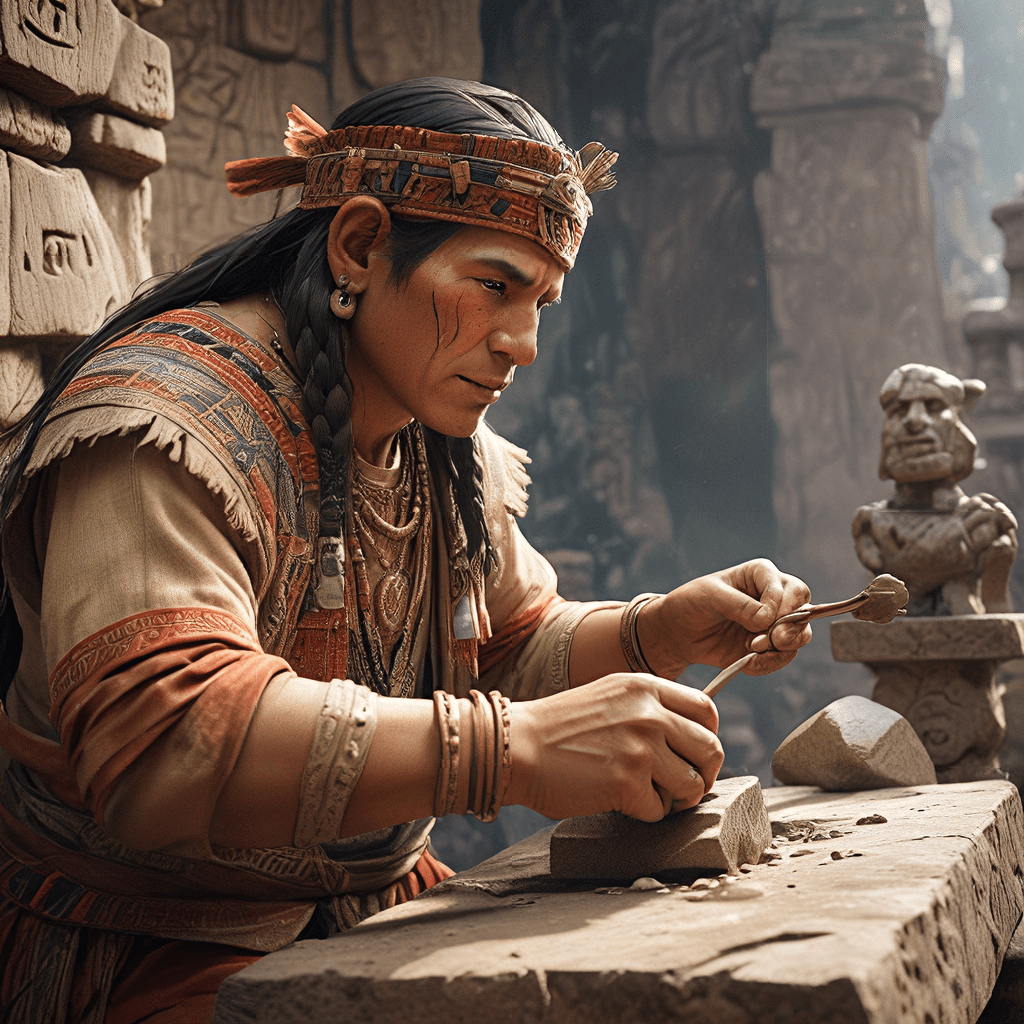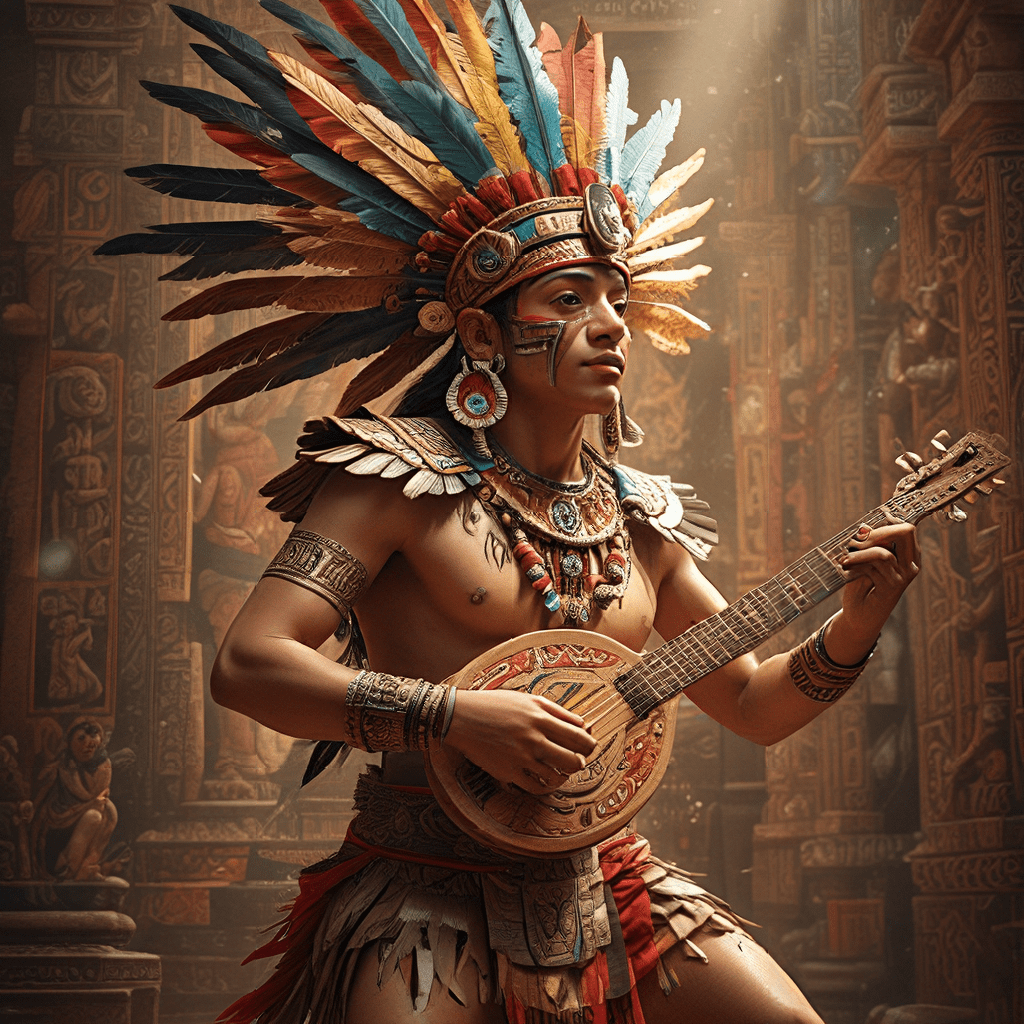The Incan Stone Carvers: A Legacy of Mystery
The Inca Empire, a civilization that flourished in the Andes Mountains of South America from the 13th to the 16th centuries, left behind a remarkable legacy of architectural marvels and intricate stone carvings. These masterpieces, despite their age and the challenges of their construction, stand as testaments to the extraordinary skill and artistry of the Inca people. The Incan stone carvers, often shrouded in a veil of mystery, have captivated the imaginations of historians, archaeologists, and the general public alike. The precision, complexity, and sheer scale of their work have led to speculation about their methods, tools, and the very essence of their craftsmanship.
The Myth of Supernatural Abilities
The incredible precision and seemingly impossible feats achieved by the Inca stone carvers have fueled the persistent myth of their supernatural abilities. The idea that the Incas possessed powers beyond human comprehension, allowing them to manipulate massive stones with ease and fit them together seamlessly, has been passed down through generations, becoming an integral part of the Incan legend. The myth of supernatural abilities has often been used to explain the seemingly impossible feat of achieving such precise and intricate stonework, especially considering the lack of documented records and the limited understanding of the Incan culture and technology. This myth has persisted despite the absence of any concrete evidence to support it, highlighting the enduring power of folklore and the mystique surrounding the Incan civilization.
The Sacred Purpose of Incan Stonework
The Incan stonework was not merely a display of technical skill; it was imbued with a profound spiritual significance. The Incas believed that their construction projects were sacred endeavors, reflecting their connection to the divine and the profound respect they held for the natural world. The meticulous craftsmanship that went into every stone structure served a dual purpose: to create durable and functional buildings, and to honor the gods and goddesses who they believed protected and guided them. The intricate carvings and the careful placement of each stone were seen as a direct manifestation of their belief system, reinforcing their connection to the divine and their place in the universe.
Master Craftsmanship: Techniques and Tools
The Incan stone carvers were masters of their craft, employing a range of sophisticated techniques and tools to achieve their remarkable feats. One of the most striking features of Incan stonework is the incredible precision with which the stones were cut and fitted together. The Incas utilized a variety of tools, including copper chisels, stone hammers, and wooden mallets. They used these tools in combination with sand and water to shape the stones, painstakingly grinding and smoothing them to achieve the desired fit. The lack of mortar in much of their construction is a testament to their advanced understanding of stonework and their ability to create structures that could withstand the forces of nature.
The Role of the Inca Priesthood
The Inca priesthood played a crucial role in guiding the Incan stone carvers. They were not simply artisans but were considered to be the guardians of sacred knowledge and the keepers of traditional practices. The priests were responsible for overseeing the selection of stones, the design and implementation of construction projects, and the rituals that accompanied the building process. The priests' influence extended beyond the practical aspects of construction. They instilled in the stone carvers a deep sense of reverence for their work, emphasizing the sacred nature of their tasks and the importance of maintaining the highest standards of craftsmanship. This spiritual dimension infused the construction process with a profound meaning, ensuring that each stone structure was not only a testament to human ingenuity but also a vessel for divine power.
The Incan Concept of Time and Space
The Incas had a deep understanding of time and space, viewing them as interconnected and inseparable. Their stonework reflected this belief, serving as a physical representation of their cosmic worldview. The precise alignments of their buildings, the intricate astronomical observatories, and the symbolic carvings on their structures all point to a civilization that understood the rhythms of the universe and their place within it.
The Incas believed that time was cyclical, marked by the movements of the sun, moon, and stars. Their stonework reflected this belief, incorporating astronomical features like windows aligned with solstices and equinoxes, and carvings depicting constellations and celestial bodies. This focus on the cosmos was not merely decorative; it was a deeply ingrained aspect of their belief system, connecting them to the divine and reminding them of the enduring cycle of life, death, and rebirth.
Theories of Advanced Technology
The seemingly impossible precision and complexity of Incan stonework have led some to propose that the Incas possessed advanced technologies that we are only now beginning to understand. These theories suggest that the Incas may have used tools and techniques that were far beyond their recorded capabilities, perhaps employing methods that harnessed unseen energies or manipulated the fabric of reality itself.
Proponents of advanced technology theories point to several unexplained features of Incan architecture. For instance, the massive stones that make up some of their structures, weighing hundreds of tons, appear to have been moved with ease, defying conventional methods of transportation. The incredibly tight fit of the stones, often without mortar, suggests a level of precision that is hard to replicate with known tools and techniques. These anomalies have fueled speculation about the possibility of advanced technologies or lost knowledge that allowed the Incas to achieve feats beyond our current understanding.
The Lost Knowledge of the Incas
The Incan Empire was devastated by the Spanish conquest in the 16th century, and much of their knowledge and culture was lost or destroyed. This loss has fueled the mystery surrounding the Incan stone carvers and their incredible feats. Despite the efforts of archaeologists and historians to reconstruct their history and culture, many aspects of their civilization remain enigmatic.
The lack of written records, the destruction of libraries and temples, and the suppression of Incan traditions by the Spanish have made it challenging to fully understand the methods and techniques used by the Incan stone carvers. This lack of information has led to speculation and conjecture, creating a shroud of mystery around their craftsmanship and fueling the belief that their secrets remain hidden, lost to time.
The Influence of Ancient Astronaut Theories
The mystery surrounding the Incan stone carvers has also attracted the attention of those who believe in ancient astronaut theories. These theories propose that extraterrestrial beings visited Earth in the past and shared advanced knowledge and technology with ancient civilizations, including the Incas. Proponents of these theories suggest that the remarkable feats of Incan stonework, such as the precision of their carvings and the seemingly impossible feats of engineering, are evidence of extraterrestrial intervention.
These theories, while popular in some circles, lack scientific evidence and are often based on interpretation and speculation. While the Incan stone carvers are undeniably skilled and their work remains impressive, there is no concrete evidence to support the claims of extraterrestrial involvement. The mystery surrounding their capabilities remains a fascinating subject for exploration, inviting us to delve deeper into the history and culture of this ancient civilization.
Modern Perspectives on the Incan Stone Carvers
Modern perspectives on the Incan stone carvers reflect a shift from the earlier focus on supernatural explanations to a more nuanced understanding of their techniques and cultural context. While acknowledging the remarkable feats achieved by the Incan stone carvers, contemporary scholarship emphasizes the importance of understanding their tools, techniques, and the social and cultural factors that influenced their work.
Ongoing research and analysis of Incan stonework continue to shed light on their methods and the complexities of their craftsmanship. The use of precise tools, the application of specialized techniques, and the collaboration of skilled artisans are now recognized as key factors in their success. Additionally, modern scholars recognize the importance of understanding the cultural and spiritual significance of Incan stonework, acknowledging its role in reinforcing their beliefs, honoring their ancestors, and connecting them to the divine.
The mystery surrounding the Incan stone carvers may never be fully solved, but through careful research and a balanced approach, we can gain a deeper appreciation for their remarkable skills, their cultural context, and the enduring legacy of their architectural masterpieces.
FAQ
Q: Did the Incas have supernatural powers?
A: There is no evidence to suggest that the Incas had supernatural powers. Their remarkable skills in stone carving are attributed to their mastery of tools, techniques, and a deep understanding of their material.
Q: How did the Incas move such large stones?
A: While the exact methods are still debated, scholars believe the Incas used ramps, rollers, levers, and a system of manpower to move large stones.
Q: Why are the Incan stone carvings so precise?
A: The Incas utilized precise tools, combined with patience and skill. They carefully shaped the stones to fit together seamlessly, creating structures that could withstand the forces of nature.
Q: Did the Incas use advanced technology?
A: No definitive evidence supports the existence of advanced technology beyond the tools and techniques known to have been used by the Incas.
Q: What happened to the knowledge of the Incas?
A: The Spanish conquest destroyed much of Incan knowledge and culture. The suppression of their traditions and the lack of written records have made it difficult to fully understand their methods.
Q: What is the significance of Incan stonework?
A: Incan stonework is a testament to their skill and artistry, reflecting their deep connection to the divine, the natural world, and their concept of time and space.



